Spring has always meant bird’s eggs and chicks. In South Florida, those eggs can be big and those chicks can be gawky baby wood storks.
There is no better place to see them up close, with all their squawky sounds and fishy smells than Wakodahatchee Wetlands, a manmade preserve in Delray Beach that is my wonderful local birding boardwalk. I visited this week, as I do every spring, to admire the stork colony.
At Wakodahatchee, dozens of nesting wood stork pairs are visible from the boardwalk. One tree island that appears to be the hot neighborhood for young stork families is no more than 15 feet from the boardwalk and a shaded shelter with a bench. It attracts a steady crowd and many photographers with long lenses.
On my March 19, 2024 visit, there were not many stork hatchlings yet. Last year at this time, most eggs had hatched. Through at least mid-April, then, you can expect those nest to be busy as the eggs hatch and the storks fledge.
These storks are so close you can hear them (one sound they make is a tiger-like growl) and smell them as well as watch them preen, flutter, bicker and mate.
A few years ago, storks were rare visitors at Wakodahatchee. On visits in recent years, there have been more than 100 nesting pairs on the property, along with nesting anhingas, cormorants, tricolored herons, great blue herons and more.
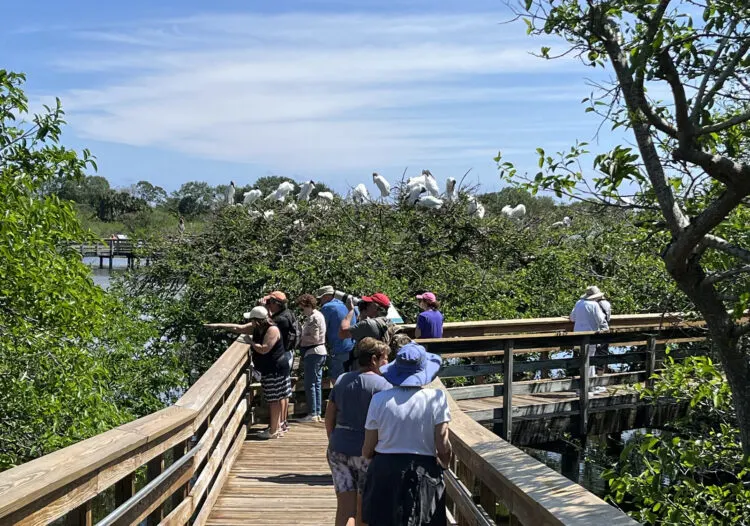
Wood storks were once endangered species, but have thrived in Florida in the last decades. They were reclassified in 2014 as threatened, not endangered.
Storks feed on fish, frogs, crayfish and other aquatic animals by “grope-feeding” – when their bills touch or sense the prey, they snap their long beaks and eat them, sight unseen. (Storks can snap their beaks shut 13 times faster than you can blink your eye. )
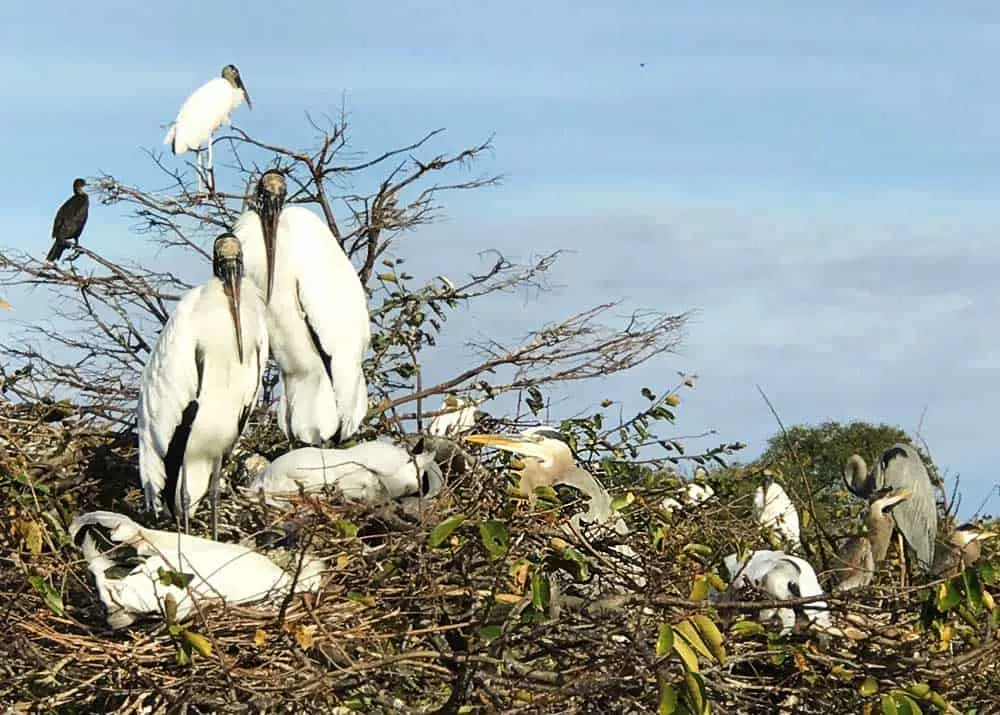
Because of their feeding style, storks require specific water levels and a rich aquatic life to thrive. And they have found that, apparently, at Wakodahatchee.
You’ll routinely see a variety of other birds at Wakodahatchee – all the Florida herons and egrets, moorhen and coots. We’ve also spotted alligators and marsh rabbits.
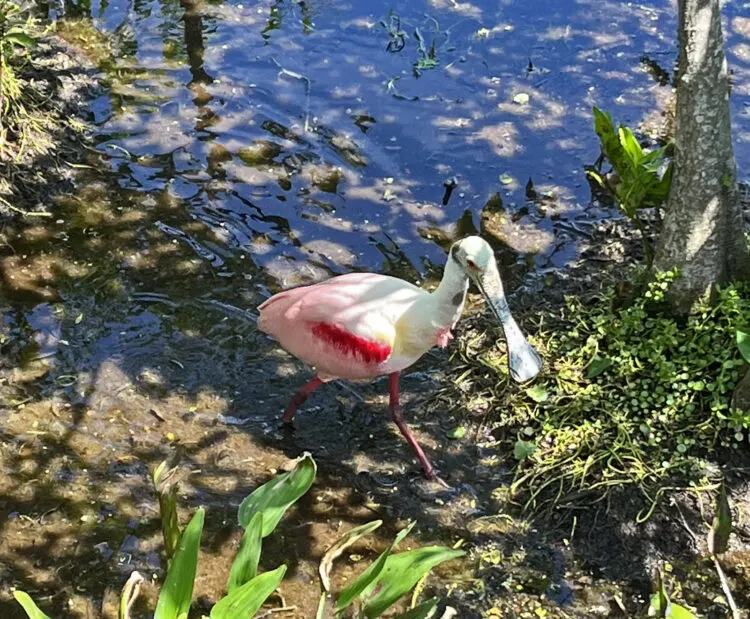
On my recent visit, the highlight was the presence of several roseate spoonbills, the pink birds so often mistaken from afar for flamingos. Up close, their spoon-shaped bills are unmistakable. A pair of spoonies flew overhead several time and then one was actively feeding right at the boardwalk as we walked by.
We were also thrilled to see a flock of glossy ibis, colorful whistling ducks and black-necked stilts. One highlight on a past visit was a great horned owl high in a tree, which I would never had spotted had it not attracted a crowd of photographers.
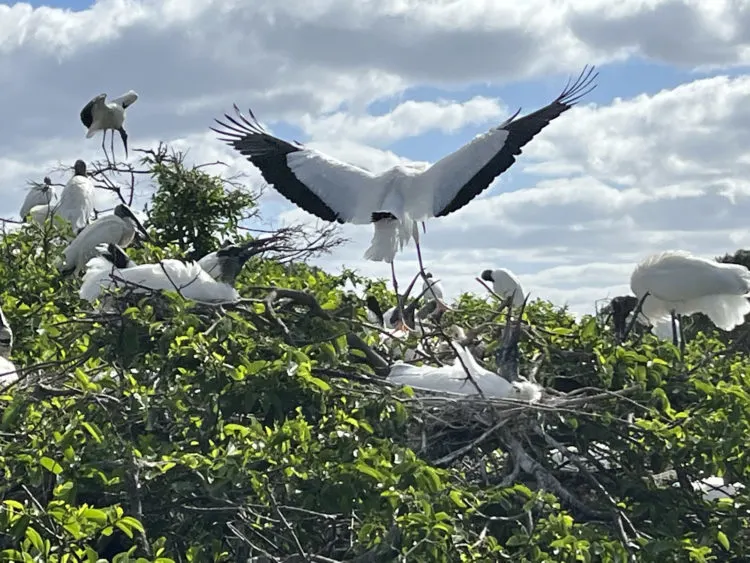
That’s the beauty of the crowds Wakodahatchee draws in spring — there’s always a bird expert nearby who is identifying birds.
Once hatched, baby storks stick around for 10 to 12 weeks, becoming fully feathered around seven or eight weeks. We look forward to an entire season of stork watching!
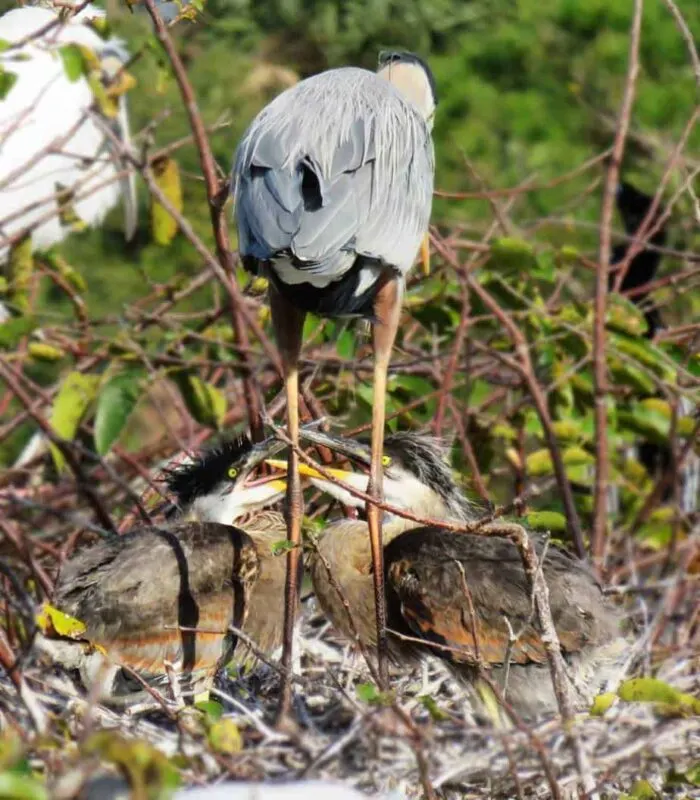
Visiting Wakodahatchee Wetlands in Delray Beach
Wakodahatchee Preserve, 13026 Jog Road, Delray Beach.
Wakodahatchee Wetland hours: Open daily from sunrise to sunset.
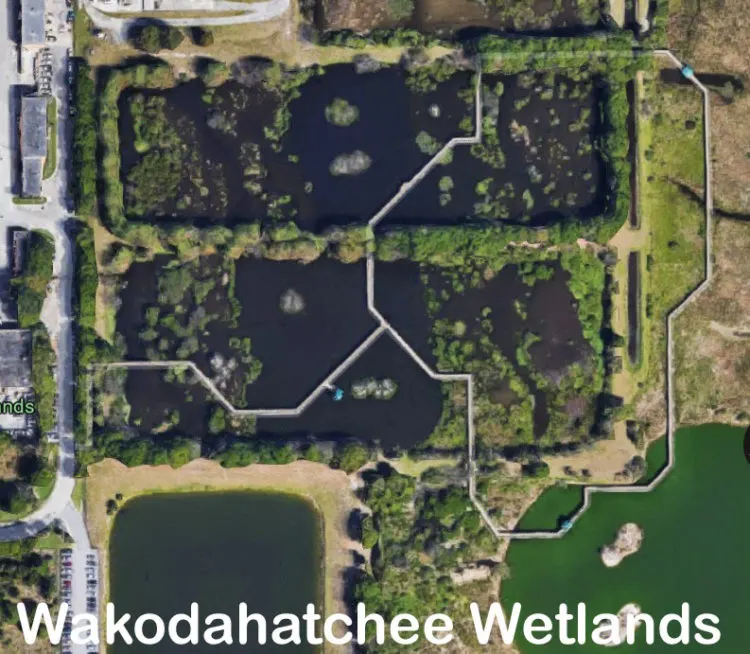
Wakodahatchee Wetlands parking: The large parking lot fills up in spring, when 500 to 1,000 people may visit over the course of a day, and you may have to wait for a space. There is good turnover among visitors. We were eight or 10 in line of cars on a sunny weekday and we waited only 20 minutes for a space. If possible, come early! Otherwise, listen to a podcast and wait.
The boardwalk is .75 miles long and is handicapped accessible.
Wakodahatchee Wetlands admission: Free.
There is a restroom and water fountain.
The preserve is a man-made wetlands designed to treat highly treated water from a county water treatment plant, filtering the water as it seeps into the underground aquifer that is essential to South Florida’s water supply.
Note: If you visit Wakodahatchee, you are five minutes from another wonderful boardwalk through a man-made wetland. Green Cay is longer and attracts different varieties of birds. Green Cay and Wakodahatchee from Florida Rambler.
More things to do near Delray Beach:
- A guide to things to do in Delray Beach
- Morikami Museum and Japanese Gardens: Feel harmony in nature
- Only minutes away: Loxahatchee National Wildlife Refuge for birding, hiking, kayaking and beautiful cypress-swamp boardwalk
- A great beach at MacArthur State Park
- Kayak to Munyon Island in MacArthur State Park
- Lake Trail, a bike trail on the elite island of Palm Beach
- Palm Beach Island: Full of history and manicured beauty
- Peanut Island for snorkeling and camping
- Hiking and bike trails at Grassy Waters Preserve, West Palm Beach
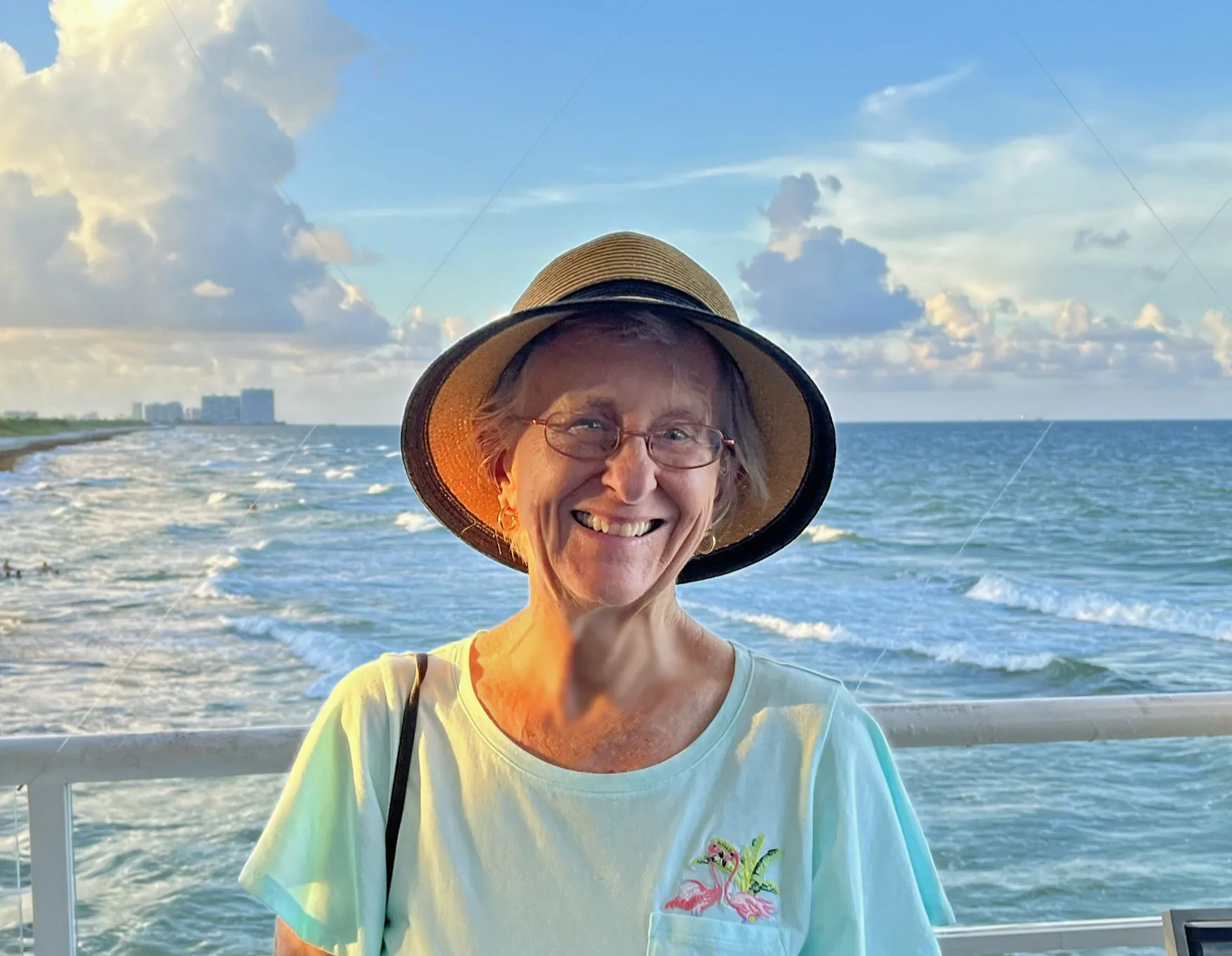
The author, Bonnie Gross, travels with her husband David Blasco, discovering off-the-beaten path places to hike, kayak, bike, swim and explore. Florida Rambler was founded in 2010 by Bonnie and fellow journalist Bob Rountree, two long-time Florida residents who have spent decades exploring the Florida outdoors. Their articles have been published in the Sun Sentinel, the Miami Herald, the Orlando Sentinel, The Guardian and Visit Florida.


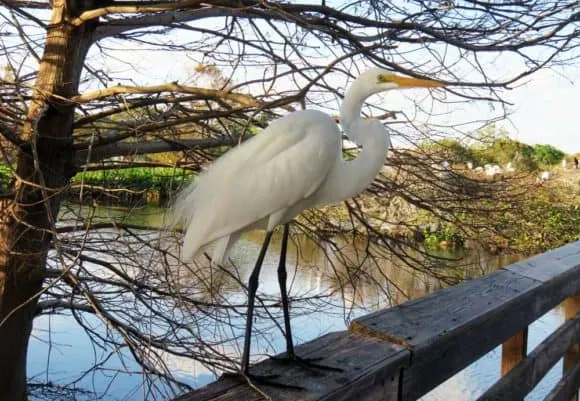
Lois Lipton Parker
Tuesday 10th of May 2022
I go every day and there appear to be hundreds of wood stork pairs and their nests. It is an amazing place to visit and I have met people from all over the world that come to see it. People with wide lens cameras are there taking the pictures. Everyone is very friendly and every day is different. It is fun watching the babies grow and they do grow fast day by day. I have never seen anything like it and every day walk the circular boardwalk for exercise. An amazing place to visit when the wood storks are nesting
Julia
Monday 19th of April 2021
Thank you so much for sharing this information with us. I visited the preserve last Thursday 4/15/21 and there were so many wood storksthere with their babies. It was wonderful! There were a number of other birds and we saw some alligators. We thoroughly enjoyed this place and the Green Cay preserve too.
Lorena conaway
Wednesday 19th of December 2018
Bonnie thank you so much for sharing your fabulous nature location experiences. I just came across your article while searching for birding locations specific to rookeries. I am so thrilled I did! I saw that you have been to the rookery at the gator farm in St Augustine and wondered if you have visited the one at Gatorland in Orlando. I live inWinter Haven abd was hoping for a comparison on them to determine if driving to st Augustine is worth the drive meaning is the rookery any larger or closer for Photographs with smaller lenses? Thank you so much!
Nancy Presant
Thursday 27th of June 2019
the birds are also extremely close to the boardwalk at Gatorland- BUT St Augustine has something Gatorland does not - nesting roseate spoonbills-- I don't know if it is any larger-- St Aug has a birding Festival in April-- with many photography field trips-- you can look for it online either to sign up or know what dates to avoid visiting the alligator Farm depending on your desires-- I arrange the field trips for my Brevard county photo club, and we have found it worthwhile to visit both Gatorland and St Aug
Bonnie Gross
Friday 21st of December 2018
Lorena, Thanks for visiting our site! I have not been to Gatorland, so I can't compare. My experience at the St. Augustine rookery was that the birds were incredibly close. You might consider waiting until nesting season (when I visited) to make your trek. I believe that would be later in spring, but I bet if you call the facility, you can find out if the birds are nesting. Bonnie
Kathleen Mysko
Monday 27th of February 2017
Bonnie, I read your articles since moving to Boynton Beach from Chicago last summer!! Today I visited Wakodahatchee Wetlands, camera in hand, and was amazed at all the birds, and nature in one small area!!! Wood Storks, White Ibis, Blue Heron, Mama and baby gators, all cohabitating, nesting, feeding, and raising their young all around this lovely preserved area!
Bonnie Gross
Monday 27th of February 2017
Thank you, Kathleen. I know! Isn't it amazing? Nesting season this year has been over the top. But every time of year I go there, there is something special to see.
Lucky Fishing Charters
Sunday 5th of February 2017
Great to hear the storks are coming back in South Florida, I will definitely check both out of these places out.